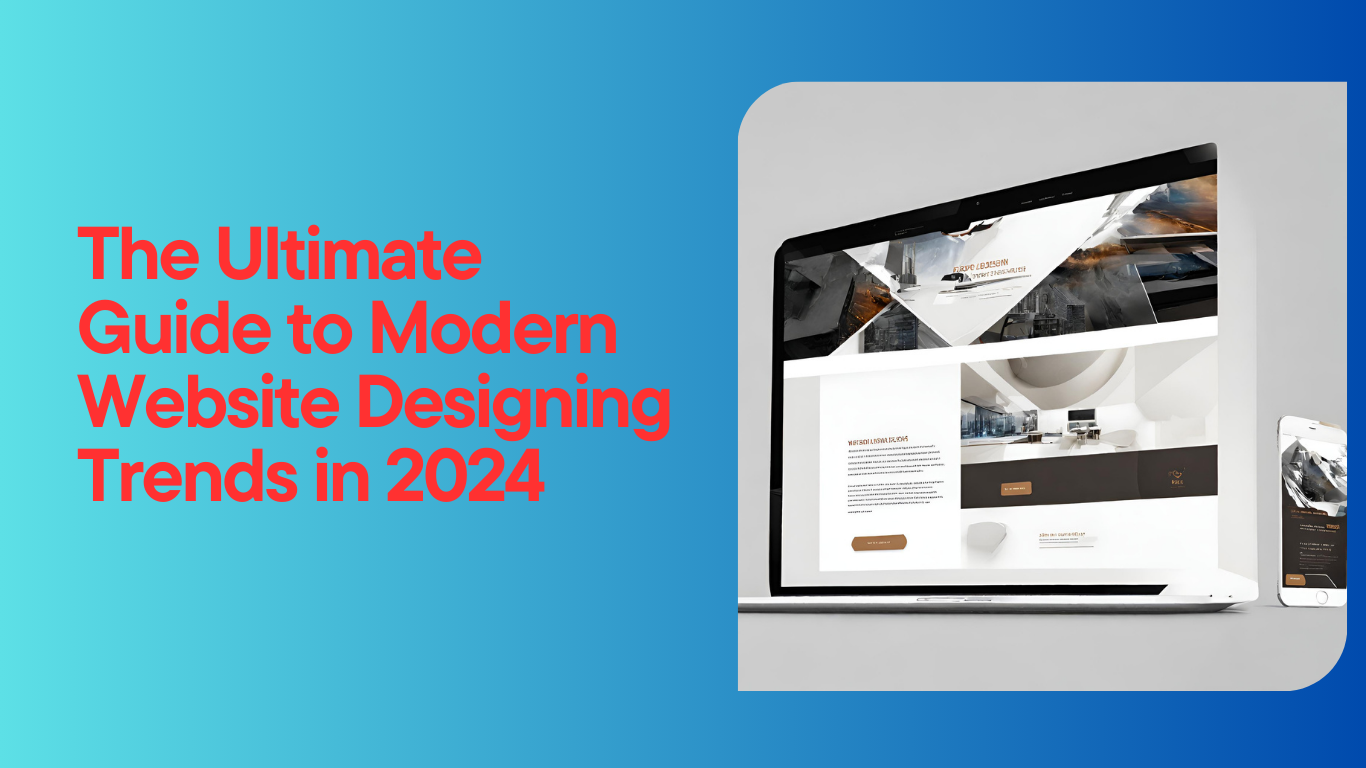
The Ultimate Guide to Modern Website Designing Trends in 2024
In the fast-paced digital landscape of 2024, website design trends are constantly evolving to meet the needs and expectations of users. As designers, it’s crucial to stay updated with the latest trends to create websites that are not only visually appealing but also functional and user-friendly. In this comprehensive guide, we’ll explore the cutting-edge trends shaping modern website design in 2024, with a focus on creating helpful, reliable, and people-first content.
Responsive Design for Seamless User Experience
In today’s multi-device world, responsive design continues to be a fundamental aspect of website development. With users accessing websites from various devices, including smartphones, tablets, and desktops, it’s essential to ensure a seamless and consistent experience across all platforms. We’ll delve into the latest techniques and best practices for responsive design, ensuring that your website looks and functions flawlessly, regardless of the device.
Accessibility and Inclusivity for All Users
Creating websites that are accessible to all users, including those with disabilities, is a top priority in modern web design. In this chapter, we’ll explore the importance of accessibility and inclusivity in web design and discuss techniques for optimizing your website for screen readers, keyboard navigation, and other assistive technologies. By prioritizing accessibility, you can ensure that your website is usable by everyone, regardless of their abilities.
Minimalism and Simplicity for Enhanced User Engagement
In 2024, minimalist design continues to be a popular trend, focusing on simplicity and clarity to enhance user engagement. We’ll discuss the principles of minimalist design and how you can apply them to create clean, uncluttered websites that prioritize content and functionality. By embracing minimalism, you can create a more intuitive and enjoyable user experience for your website visitors.
Dark Mode for Eye Comfort and Visual Appeal
Dark mode has emerged as a prominent trend in website design, offering users a sleek and stylish alternative to traditional light themes. In this chapter, we’ll explore the benefits of dark mode, including reduced eye strain and improved battery life for mobile devices. We’ll also discuss techniques for implementing dark mode effectively, ensuring that your website maintains readability and accessibility in low-light environments.
Personalization and User-Centric Design
In the era of big data and AI, personalization has become a key driver of user engagement and satisfaction. We’ll examine the role of personalization in website design and discuss strategies for tailoring the user experience based on individual preferences and behavior. By adopting a user-centric approach to design, you can create more meaningful and relevant experiences that resonate with your target audience.
Visual Storytelling and Interactive Content
In 2024, visual storytelling and interactive content continue to gain traction as effective ways to engage users and convey information. We’ll explore the power of visual storytelling in web design, including the use of imagery, videos, and animations to captivate and inform your audience. Additionally, we’ll discuss techniques for creating interactive content that encourages user participation and fosters deeper engagement with your website.
Conclusion
In conclusion, staying abreast of the latest website design trends is essential for creating compelling and user-friendly digital experiences in 2024 and beyond. By embracing responsive design, accessibility, minimalism, dark mode, personalization, and visual storytelling, you can create websites that are not only visually stunning but also functional, accessible, and user-centric. Remember, the key to successful website design lies in prioritizing the needs and preferences of your users, ensuring that your content is helpful, reliable, and people-first.
FAQs
What are the key website design trends in 2024?
- Answer: The key trends in 2024 include responsive design, accessibility, minimalism, dark mode, personalization, and visual storytelling.
How important is responsive design for websites?
- Answer: Responsive design is crucial for ensuring a seamless user experience across various devices, including smartphones, tablets, and desktops.
Why is accessibility important in web design?
- Answer: Accessibility ensures that websites are usable by all users, including those with disabilities, promoting inclusivity and providing equal access to information.
What is the significance of minimalism in website design?
- Answer: Minimalism focuses on simplicity and clarity, enhancing user engagement by prioritizing content and functionality in a clean and uncluttered layout.
How does dark mode benefit website users?
- Answer: Dark mode reduces eye strain and improves readability in low-light environments, offering users a stylish and comfortable browsing experience.
Why is personalization important in web design?
- Answer: Personalization enhances user engagement by tailoring the website experience to individual preferences and behavior, fostering a deeper connection with the audience.
